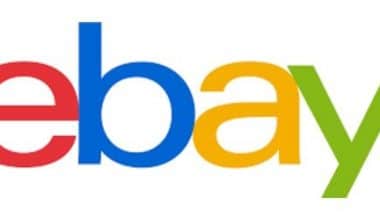Product descriptions are an important aspect of any online sales strategy. They teach your customers about your products, assist you in developing your brand voice, and eventually persuade potential purchasers to make a purchase. Don’t worry if you’re finding it difficult to write product descriptions that sell. In this article, we’ll provide you with simple tips to help you write a product description with an example that will enhance your sales.
What is a Product Description?
A product description is a piece of writing that explains the qualities and benefits of a product, ranging from basic data to anecdotes that make a product interesting to an ideal buyer.
Often included in product descriptions include…
- Specifications and features of the physical product
- Styles
- Colors
- Weights
- Dimensions
- Images
- Technical specs
- Benefits and applications of the product
- Material types utilized in the construction
- Tales about the product and the ideal buyer
- How something is made (i.e., manufactured or handmade)
- Where something is produced (or the sourcing in the production chain)
- Information about sustainability
- Information on pricing
- Delivery Information
How to Write an Effective Product Description
So, do you believe you’re ready to begin working on your product descriptions? Here are five excellent practices for writing product descriptions that can earn a sale.
#1. Begin with SEO.
Choose a descriptive SEO keyword or phrase that you want your product to rank for in SERPs. You may learn about SEO best practices and find target keywords with tools like Moz or Ahrefs, or you can outsource SEO to a marketing agency.
In general, your goal term should appear on each product page numerous times, including:
- Description of the product: “Purple Cap with Cheetah Print”
- URL of the product page (for example, sampleboutique.com/purple-hat-cheetah-print)
- Each product image’s alt text
#2. Keep your audience in mind
Remember to write a product description for the clients you’re attempting to attract, not just for robots (i.e., Google’s search algorithm). Put yourself in your customers’ shoes and think about what they’d need to know to make a purchase, and what emotive language might tug on their illogical side and drive an impulse buy.
On the practical side, technological parameters can aid in the sale. A size guide on a clothing store’s website, for example, can assist customers in finding the proper fit. On the psychological side, explaining how popular or in-demand a product it can create a sense of urgency (more on this later).
#3. Keep your brand voice consistent.
Remember to keep your brand voice in mind while you write for your audience. A product description is an extension of your brand, therefore adhere to the standards of your style guide as well as voice and tone guidelines to provide a consistent customer experience.
#4. Pay attention to conversions
Instead of only utilizing flowery words in product descriptions, incorporate useful information that helps enhance conversions. Here are some suggestions:
- Share use-case concepts: A dress product description example would read, “This day-to-night dress is wonderful to wear to the office with a blazer, and transforms into the perfect date night attire with a pair of heels.” This description transforms simple clothing into a multi-purpose outfit.
- Instill a sense of urgency: In the description, phrases like “limited edition,” “limited time,” or “it sold out in three days last time” help generate a sense of urgency that plays into retail psychology and urges buyers to buy now so they don’t miss out. A product description example that employs these methods would read, “When we first offered this jacket, it sold out in less than a week. We’ve issued a small number of jackets for our anniversary sale, and once they sell out, they’re gone for good.
#5. Make use of social proof
Customers are more likely to listen to the opinions of their peers than to marketing communications. Using customer reviews, newspaper mentions, and other types of social proof in your product descriptions can increase sales.
A product description example of this method could be anything as easy as, “this purse has been shared more than 35,000 times on social media.”
Three Examples of Product Description
Before you start writing your own, use these product description examples as inspiration.
#1. Clothes Product Description Example
The description for this hoodie from Le Brow Bar is a wonderful example of how to write product descriptions for clothes.
The basic product description begins with “loungewear you’ll live in,” which appeals to the emotions of the target demographic. Afterward, it provides useful information about the item’s makeup. “Mix and match to produce cute + comfy outfits!” concludes the product description, which is a covert method of cross-selling more things.
The secondary description includes more useful information including specifics, fit, substance, and garment maintenance.
#2. Example of a Beauty Product Description
When selling something difficult to understand online, such as perfume, a product description must do the heavy lifting to make a sale. Etiket, a luxury cosmetics boutique, demonstrates how to do this with its product description for this perfume.
“Phi is a rich smell, inspired by a natural extract of roses grown in Afghanistan’s rose heartland, Nangarhar,” the description states. It appeals to the emotions of luxury-seeking buyers by emphasizing the unique origin of the perfume’s aroma.
“This rose oil is exceptionally rare and of the greatest quality. Inspired by these flowers growing in a parched and harsh land, Phi is a rare treasure, harmonizing opposing lines, rich in natural raw materials that provide depth and authenticity,” states the secondary description.
It goes on to discuss the scent’s exclusivity, then describes the scent’s notes in detail to help convey in writing what can typically only be understood through smell:
“Phi opens with a lush fruity line of Apricot. “An all-natural apricot extract enchants and blends into a Cinnamon line and touches of bitter almond, tempered by Bergamot essential oil.”
#3. Example of a technical product description
The product description for this YM Camera camera lens demonstrates how descriptive you can be when marketing a highly specialized product. It breaches the 300-word rule to give vital information that both emphasizes product specifications and educates clients about what they need to look for in a lens.
Specifically, the product description provides information about the technology underlying the lens, how picture stabilization works, the benefits of the lens’ small weight, and accessory compatibility? This merchant goes above and above with the product description by using it to educate customers about the product they’re purchasing.
Build (and test) Your Own Product Description Template
Even if you follow these nine principles for writing product description descriptions that sell, you may still want to utilize a product description template.
Regrettably, there is no universally applicable product copy.
Instead, try to design your own description template. Consider the quality characteristics that your target audience is looking for and incorporate them in your descriptions.
If you’re having trouble writing a product description, use these tips to help you create a product description template that works for your items and business.
First, respond to the following questions:
- Who is the perfect customer? Understanding who your product is for is crucial to writing a successful description.
- What are the primary characteristics of your product? Write out any dimensions, materials, functions, care instructions, and specifics about the fit (if you’re selling apparel).
- When should I use the product? Is your warm blanket ideal for cold winter nights by the fireplace with a cup of hot cocoa? Or is it more appropriate for a cool autumn evening as the sun sets? Emphasize the ideal scenarios for when your product should be used by a consumer.
- What makes your product unique? Consider the distinct advantages of your product and why it is superior to that of your competitors.
Once you have this information in a document, use the following template to write your product description.
- Write a title that catches the attention of your target audience. Keep your ideas simple while highlighting an immediate product benefit. For example, if you’re selling a yoga t-shirt with a pattern, call it Fleck Studio Shirt.
- Write a short paragraph based on the essential elements and best-used information above. Refer to the examples above to receive inspiration for writing an engaging description.
- Provide a list of product features and benefits in bullet form. Provide any technical details needed.
- Add social proof. You can use a customer reviews app to record product reviews on your website and integrate others from third-party sites such as search engines or Facebook.
How Long Should a Product Description Be?
The length of a product might vary depending on its cost, complexity, or frequency of purchase. Buying a car, for example, necessitates significantly more research than buying a pair of pants.
- Abbreviated form (50 words or less)
- Standard (100 words)
- Long-form (250+ words)
What Can Product Descriptions Do For a Company?
Aside from informing and tempting potential customers, the greatest descriptions can help you separate your product and brand from the competition by emphasizing your most important features and benefits.
As has been stated numerous times, advertisements can only take you so far. If you want to eventually convert customers with content, you must provide them with the knowledge they require to make a decision.
Benefits of Product descriptions
Whether their products are meant for B2B, B2C, or D2C (direct-to-consumer) markets, any business, regardless of industry, can utilize descriptions to promote its products.
Here’s a peek at the benefits:
- Improves the SEO of your product pages
- Lets consumers compare features and benefits
- Increases product and brand trust
- Increases conversion by bringing clients further down the purchasing funnel
How Do You Write an Effective Product Description?
- Concentrate on your ideal buyer.
- Benefits should be used to entice people.
- Justify your use of superlatives.
- Appeal to your reader’s imagination.
- Mini stories can break down reasonable barriers.
- Use sensory phrases to seduce.
- Use social proof to persuade.
- Make your description scannable.
What is the Best Format For a Product Description?
- Specific product title
- Short, descriptive paragraph
- Bulleted list of features and technical details
- Social proof
- Call to action
Conclusion
Therefore, knowing your audience is essential for determining what type of content would best communicate to them and maximize conversions.
The e-commerce product description formula is effective for the majority of brands, but it is merely a beginning point.
Think visually. Enhance your product photos with graphics. A/B test copy and make those pages personal. Look at Google Search Console to uncover popular terms and powerful words so you can enhance SEO traffic to the product page.
Whether you’re selling t-shirts or strollers, customers like to buy from individuals they can trust, and creating trust varies depending on what you’re offering.
Consider how images and descriptions can work together to tell your story to customers from the minute you use a website builder and create the look of your site. There are numerous examples of product descriptions available, but select the one that works best for your company.
Know your audience. Know your product. Then, with your online shop descriptions, show and tell.
- JOB ANALYSIS: Effective Methods for Job Analysis (+Process and Purpose)
- BUSINESS PLAN: Examples and Template for Startup
- PRODUCT MARKETING: Meaning, Types, Strategy & Examples
- PRODUCT LISTING ADS: Best Practices Guide
- PRODUCT PROMOTION: Best Promotions Examples & Ideas






